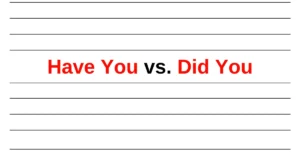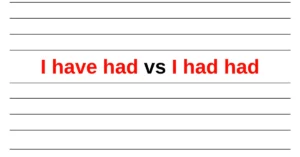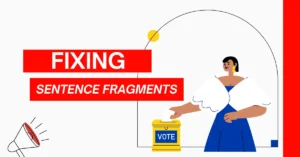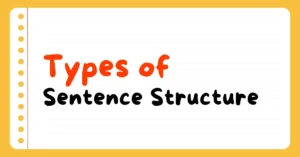Double Negatives: People should learn the basic rules of speaking English but they fall into the old habit of using what we call double negatives—two negative words in one sentence. It’s a definite no-no. Don’t use double negatives. For example, “I haven’t seen nothing.” That’s absolutely bad English, and you shouldn’t use it. The obvious option is, “I haven’t seen anything,” a negative with a positive or a positive with a negative.
It’s something that happens quite often. So let me try to explain the rationale behind it to you.
You will hear them in songs, and you will listen to them in movies, like “You ain’t seen nothing yet.” But we don’t use them in speech because they sound wrong, give a bad impression, and are quite negative.
What is a Double Negative Grammar?
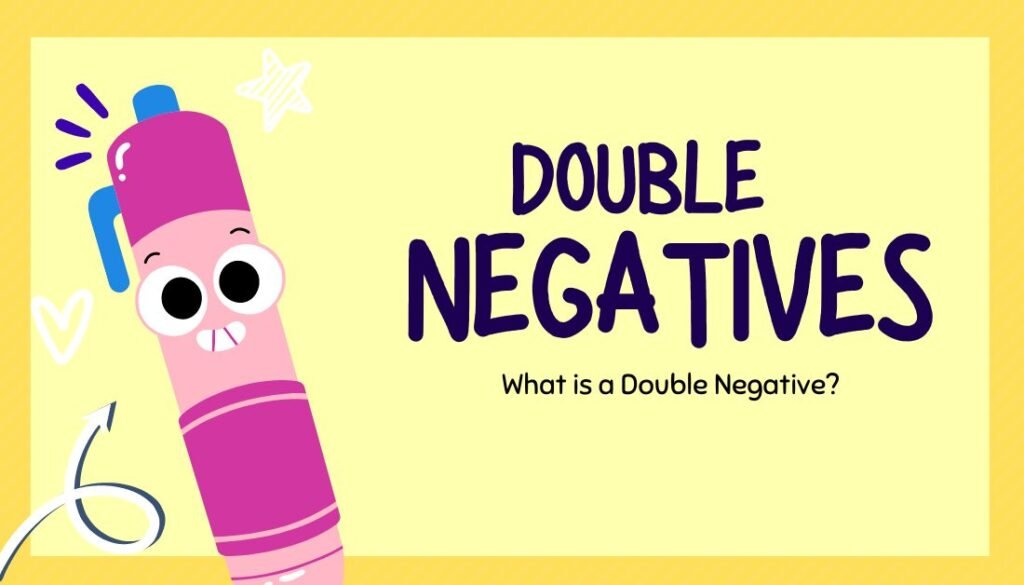
A double negative is usually defined as two negative words that appear in the same sentence. What it results in is a positive. So two negatives make a positive.
Let me give you a little example. Let’s say I made the statement, “I have nothing.” “Nothing” is the negative word; “I have” is positive. But the fact that we use “nothing” in the sentence turns it into a negative. “I have nothing,” meaning I have no money, or I have nothing to give you, or I have nothing to do with that—something like that.
It’s a negative in the sentence that turns it into a negative even though “I have” is positive. So we can’t say, “I haven’t nothing.” If I could use it as two negatives, I might say, “I do not have nothing.” So that’s your two negatives in the sentence.
So here, “I do not have nothing.” “Do not”—one negative; “nothing”—second negative. One negative multiplied by the second negative turns it into a positive. So, in actual fact, what that sentence means is “I have something. That’s exactly what we should say. We should look at the positive: “I have something,” not “I do not have nothing.”
Examples of Double Negatives in English
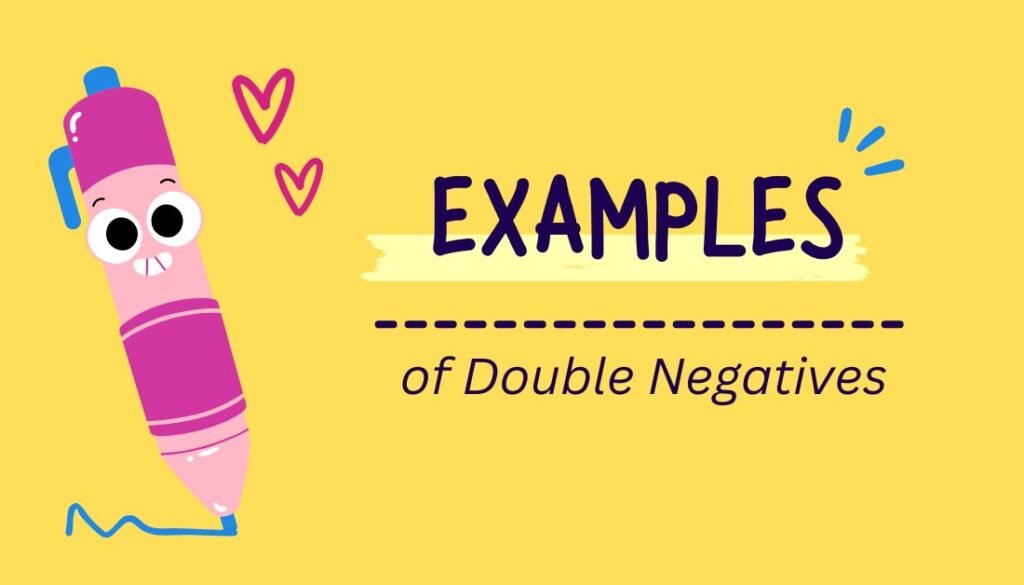
So what I’m going to do now is give you some examples of sentences where we use the double negative and then put them into the correct format.
1. I don’t know nobody who’s coming
For example, “I don’t know nobody who’s coming to a party.”
But the correct version is:
- I know nobody who’s coming
- I don’t know anybody who’s coming
Make sure you have a positive and a negative or negative and a positive. That would be perfect English.
2. I don’t have no time for that
For example, “I don’t have no time for that.”
But the correct version is:
- I don’t have any time for that
- I have no time for that.
So, negative-positive or positive-negative.
3. I can’t get no satisfaction
If you are making a complaint don’t say, “I can’t get no satisfaction.”
But the correct version is:
- I can’t get any satisfaction
- I got no satisfaction
4. You ain’t seen nothing yet
For example, “you ain’t seen nothing yet.”
But the correct version is:
- You haven’t seen anything yet
- You have seen nothing yet
Also Read: Double Positives in Question Tags and How to Use them
5. I can’t find my keys nowhere
For example, “I can’t find my keys nowhere.”
But the correct version is:
- I can’t find my keys anywhere
So “nowhere” becomes “anywhere.” That second negative, put it into a positive, then you have one negative.
6. She never goes with nobody
For example, “She never goes with nobody.”
But the correct version is:
- She never goes with anybody
- She goes with nobody
She always goes on her own. She never goes with anybody. She always goes on her own. Or she goes with nobody. She prefers to go on her own. Either will do: one negative, one positive, or one positive, one negative.
7. All the witnesses claimed that they didn’t see nobody
For example, “All the witnesses claimed that they didn’t see nobody.”
But the correct version is:
- All the witnesses claimed that they didn’t see anybody
Avoid those double negatives. Make the sentence sound much more effective and much, much more professional.
Students Also Read: What is Parts of Speech in English Grammar
Double Negatives Exceptions
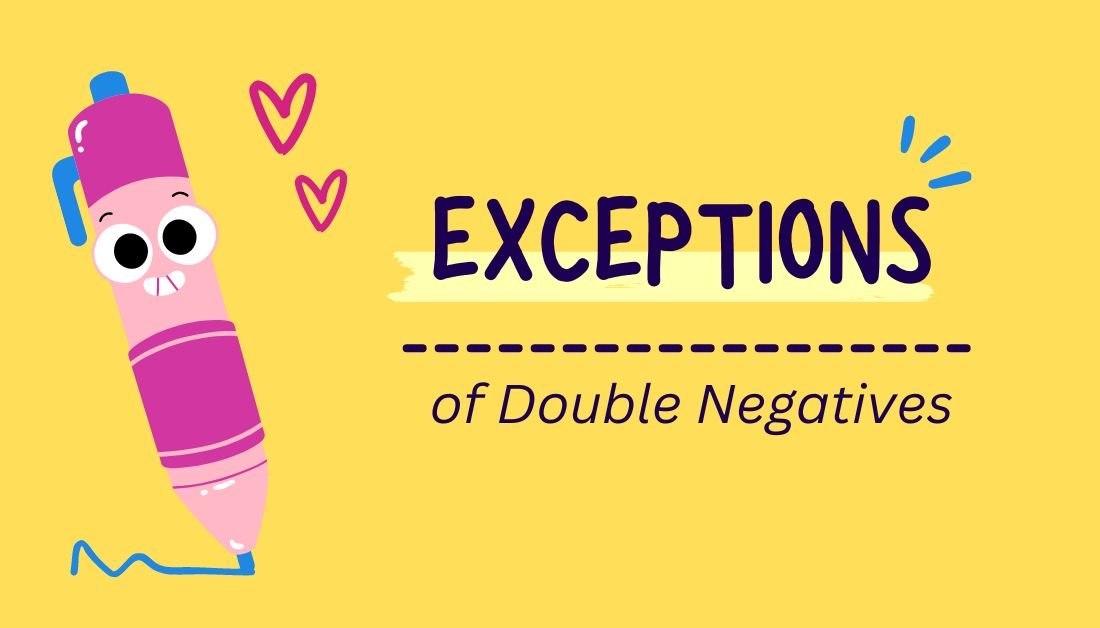
Like all English, there tend to be a few exceptions. Let me give you a few exceptions in relation to this aspect of double negatives. They can be permitted if the intention is to make a positive statement.
1. Two Not + Positive Situation
a. It wasn’t very expensive but it certainly didn’t cost nothing
It means you are saying, “It certainly cost something, but it wasn’t as expensive as I thought.” It means that you didn’t get it for nothing; you did have to pay, but not what you had thought you might have to pay.
So we can use it when the intention is to turn it into a positive.
b. When I said I didn’t want a lot of fuss about my birthday, I didn’t mean no fuss
When I said I didn’t want any fuss about my birthday, I didn’t mean no fuss. So here, we’re using two negatives, but in fact, we can use it because the intention was for it to be a positive.
What you’re really saying is, when I said I didn’t want any fuss for my birthday, I meant, “I didn’t want a big party, but I wanted something.” I wanted something, perhaps something in the family.
So you wanted something, but not the big, big, flamboyant, expensive celebration. So you can, in that situation, use the double negatives because the intention was to turn them into a positive. That’s the type of exception we’re talking about when we mention it.
2. Not + Negative Prefixes
Another way in which we can use double negatives is when we perhaps use “not” and then follow it with a word with a prefix like “IR, DIS, IL, IM, IN, UN, ETC” Let me give you a little example of that:
a. He wasn’t irresponsible about his duties
He wasn’t irresponsible about his duties, which means “he was responsible; he was very responsible about his duties.”
b. This gemstone is not uncommon
This gemstone is not uncommon. So “not” negative; “uncommon” could be negative, but it means this gemstone is common—you see it everywhere.
c. The results are not inconclusive
The results are not inconclusive means that they are conclusive; we did get information from the results. So in those situations, you’re using “not,” a negative word with the negative of an adjective by adding one of those prefixes.
Rules for using Double Negatives
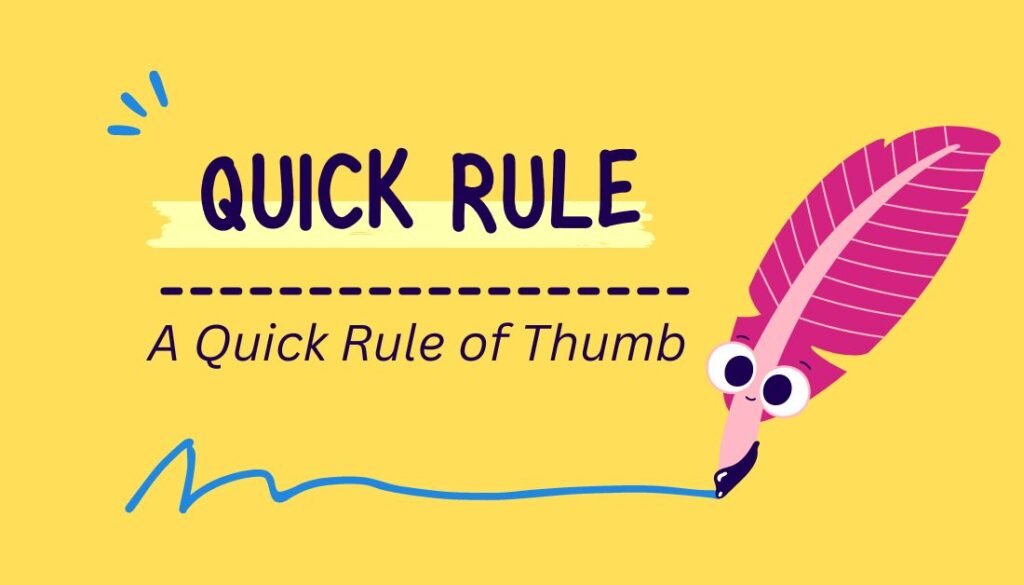
These are a few rules of thumb for using double negatives.
1. We use ‘Anything’
A quick rule of thumb when we want to use words with “any,” like, anybody, anyone, anywhere, anything. We can use them in questions:
- Is there anything I can do for you?
- Is there anyone you want me to call?
- Is there anybody you know suitable for this job?
2. In statements that include ‘Not’ or ‘No’
If we want to use them with statements that include “not” or “no”. For example:
- I don’t know anything about it.
- I don’t know anybody that would be suitable.
- I don’t know anyone that would be able to answer the question.
3. While using ‘Nothing’
If you want to use “nothing, nobody, no one, nowhere” we can use it in statements where there is no other negative word. For example:
- There is nothing I can do.
- There is nothing I can add.
- There is nothing more I can tell you.
- Nobody stays at home to look after the kids.
- Nobody cares how I feel!
- There is nobody in the classroom
- I have nowhere else to go.
Conclusion
In this grammar lesson you were learning about are double negatives, impressing upon you the fact that double negatives are a definite no-no. We don’t use them. There are exceptions, and I’ve covered those.
Students Also Read:
73 Common English Grammar Mistakes and How to Avoid Them
Which Grammar is Important to Speak English: Basic Rules
English Spelling Rules With Examples
Explore More:
- Well vs. Good: What’s the Difference and When to Use Each
 What is the difference between good and well. These two words might seem similar, but they’re used in …
What is the difference between good and well. These two words might seem similar, but they’re used in … - Have You vs. Did You: What’s the Real Difference?
 Imagine you’re meeting a friend in the evening, and you want to ask if they …
Imagine you’re meeting a friend in the evening, and you want to ask if they … - Difference Between I have had and I had had
 Have you ever found yourself tangled in the web of “I have had” and “I …
Have you ever found yourself tangled in the web of “I have had” and “I … - Understanding and Fixing Sentence Fragments
 In this lesson, you will be learning about sentence fragments. Ever written something that looks like …
In this lesson, you will be learning about sentence fragments. Ever written something that looks like … - Types of Sentence Structure: Simple, Fragmented, or Run-On
 In this English Grammar lesson, you’ll be learning about sentence structure, specifically focusing on simple sentences, fragments, and run-on …
In this English Grammar lesson, you’ll be learning about sentence structure, specifically focusing on simple sentences, fragments, and run-on …

